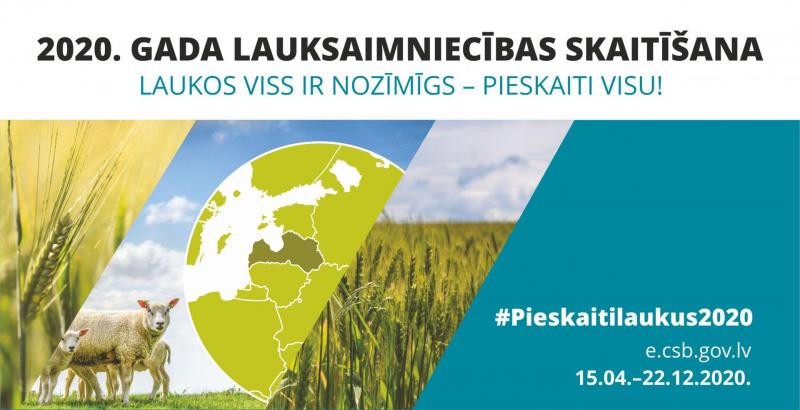
Provisional results of the Agricultural Census 2020 are available on the Official statistics portal.
Agricultural Census is conducted once in ten years, and it allows acquiring comprehensive agricultural indicators that serve as a base for the sector analysis, development plans and programmes.
During the years of the first republic, six agricultural censuses were conducted in Latvia:
While in the USSR, separate censuses of croplands, livestock, and orchards were organised in Latvia.
After Latvia regained its independence, two censuses were held – in 2001 and 2010. Both were based on common European Union (EU) methodology and legal substantiation. Agricultural Census in EU is conducted once in ten years, whereas in between a Farm Structure Survey (FSS) is organised (in Latvia FSS was conducted in 2003, 2005, 2007, 2013 and 2016).
Regulation (EU) 2018/1091 of the European Parliament and of the Council on integrated farm statistics1 provides for the next Agricultural Census to be conducted in 2020.
Agricultural Census will help to acquire information on the number of agricultural holdings, their structure and size, utilisation of agricultural area, number of livestock, animal housing facilities, management of plant nutrients, labour force in agriculture, as well as other gainful activities of holdings.
To provide information for Agricultural Census data from the following administrative data sources are used:
- database of the EU direct payments of Integrated Administration and Control System of the Rural Support Service (RSS);
- RSS information on support to rural development;
- Agricultural Data Centre (ADC) Animal Register;
- ADC Organic Farming Statistics Information System;
- ADC Housing facilities infrastructure and manure storage register.
The results acquired will be used for the agricultural sector analysis, Latvian and EU agricultural policy and rural development decision-making, as well as Common Agricultural Policy (CAP) planning and implementation. The information will serve as a basis for reasoned estimation of agricultural sector influence on environment and climate change, quality and safety of agricultural products, as well as production of comparable statistics for agricultural activities in the EU Member States.
Results of the Agricultural Census 2020 are needed to work out and implement Latvian CAP Strategic Plan 2021–2027 and especially for substantiation of direct payments, rural development measures and development, modernization of sectoral strategies, management and coordination systems, as well as reduction of administrative burden on support recipients, and monitoring of the plan.
Agricultural Census data will be used to evaluate implementation of Latvian National Energy and Climate Plan 2021–2030 measures, especially in respect to the reduction of greenhouse gas emissions, higher CO2 capture and increase of the share of renewable energy resources in agricultural activities.
Information about Agricultural Census 2020 is available on the Eurostat website.
1(EU) No 2018/1091 (of 18 July 2018)